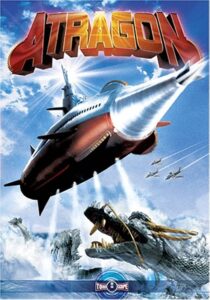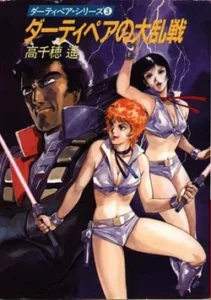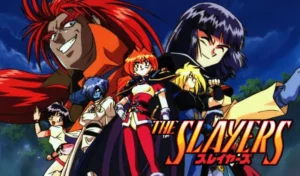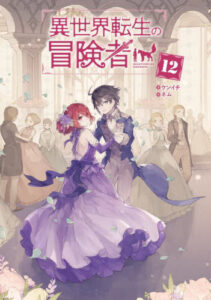I went to meet the author Massimo Soumaré to tell me about his latest editorial work: “Japanese Fantastic Literature – Ancient, Modern, Contemporary” published by Lindau Editore. The chat has become an opportunity to learn about Japanese culture and art under little known aspects, highlighting, through historical research, the fantastic, science fiction and horror scene from its origins to today, through the works and its authors.
The work is divided into a general part which includes the great authors of “high literature”, alongside others considered of “entertainment literature” which necessarily do not have to be of the fantastic genre but which in any case have elements linked to the literature of the imaginary . This is due to the fact that the authors are not tied to a specific trend but “jump” from one theme to another.
The essay unravels from 712 AD to the present day, divided into six chapters which in turn present sub-chapters.
The horror genre had a great interest in the mid-20th century with J-Horror genre related to cinematic works such as “The Ring”, “The Call”, “Ju-Rei… and the Japanesquo Horror dedicated to literature. We can say that there is a beginning of great interest for this genre towards the 70s with authors of the caliber of Mariko Koike and Setsuo Shinoda.
Interest in supernatural stories exploded in the Edo period, when various artists traveled to various parts of Japan to collect testimonies and stories concerning creatures or sightings of yokai and ghosts, so much so that they were staged in the No and Kabuki Theater.
The diffusion is also explained by the fact that the authors are unable to get rid of these traditions by now impregnated in the culture. In addition, in the 1700s a large stream of fantastic stories arrived from China, including “The Stone Monkey”, these new literary forms fascinated many authors who wrote about their versions.
When Japan opened up to the West, in the second half of the 19th century, interest in Jules Verne’s Novels broke out and therefore many writers were inspired by the French author, forerunner of the future Japanese science fiction.
 Among the first Japanese science fiction works there is “Atragon”, a novel of 1899 by Shunro Oshikawa, from which a film will be made in 1963.
Among the first Japanese science fiction works there is “Atragon”, a novel of 1899 by Shunro Oshikawa, from which a film will be made in 1963.
A science fiction genre that was mixed with the adventure one, to arrive at modern science fiction in the 60s, when American works began to be translated.
The interest in this topic leads to the birth of the Japanese Ufologists Club and the Japanese Science Fiction Writers Club among which we find Sakyo Komatsuo, Yasutaka Tsutsui, Shinichi Hoshi. Works in which many mystery writers, such as Seicho Matsumoto, insert science fiction elements, for example the classic mad doctor,
Science fiction in Japan is divided into decades, as in the different periods there are authors who write different themes that evolve and the readers themselves change.
An interesting curiosity is that the first science fiction writers were hired as screenwriters for the first comics of the genre such as Kazumasa Hirai author of “Wolf Guy”.
 At the end of the 70s the Light Novels began to take interest in which structured works with more dialogues and fewer descriptions, an example are the “Dirty Pairs”. Among the authors of this genre there is the writer Himuro Saeko who developed the Light Novel genre and linking it to Japanese Fantasy, an example is “Lodoss”.
At the end of the 70s the Light Novels began to take interest in which structured works with more dialogues and fewer descriptions, an example are the “Dirty Pairs”. Among the authors of this genre there is the writer Himuro Saeko who developed the Light Novel genre and linking it to Japanese Fantasy, an example is “Lodoss”.
 In the 80s fantasy is closely linked to the videogame panorama which thus allows the genre to be made known to the general public with works such as “Dragon Quest”. This leads to the boom of literary fantasy such as “Slayer”, “Orphen”, “Fortuna Quest” which become a Media Mix product, i.e. from this kind of titles TV series, plays, radio programs are taken… with millions of pairs sold.
In the 80s fantasy is closely linked to the videogame panorama which thus allows the genre to be made known to the general public with works such as “Dragon Quest”. This leads to the boom of literary fantasy such as “Slayer”, “Orphen”, “Fortuna Quest” which become a Media Mix product, i.e. from this kind of titles TV series, plays, radio programs are taken… with millions of pairs sold.
In 2010 there is a new return to science fiction, more hybrid that mixes with other genres such as yellow, fantasy, horror and giving life to new strands such as “Isekai” in which the protagonists are transported to other worlds.
Fantasy which is divided into Western in which there are elements of the Nordic European fantastic and then there is the Eastern one which contains peculiarities of Japanese, Chinese, Korean folklore, with the inclusion of totally particular characters such as the Bunny girls, rabbit girls with supernatural strength .
 Another evolution is the Light Bungei, written in a more adult way, aimed at a target of women around the age of 40, who in the 80s read novels called Shoshezu featuring girls between 13 and 15 years old.
Another evolution is the Light Bungei, written in a more adult way, aimed at a target of women around the age of 40, who in the 80s read novels called Shoshezu featuring girls between 13 and 15 years old.
An essay that offers the reader the opportunity to learn through careful research, many aspects of the fantastic Japanese, suggesting various interpretations, indicating what may be the origins of many genres. Unmissable
